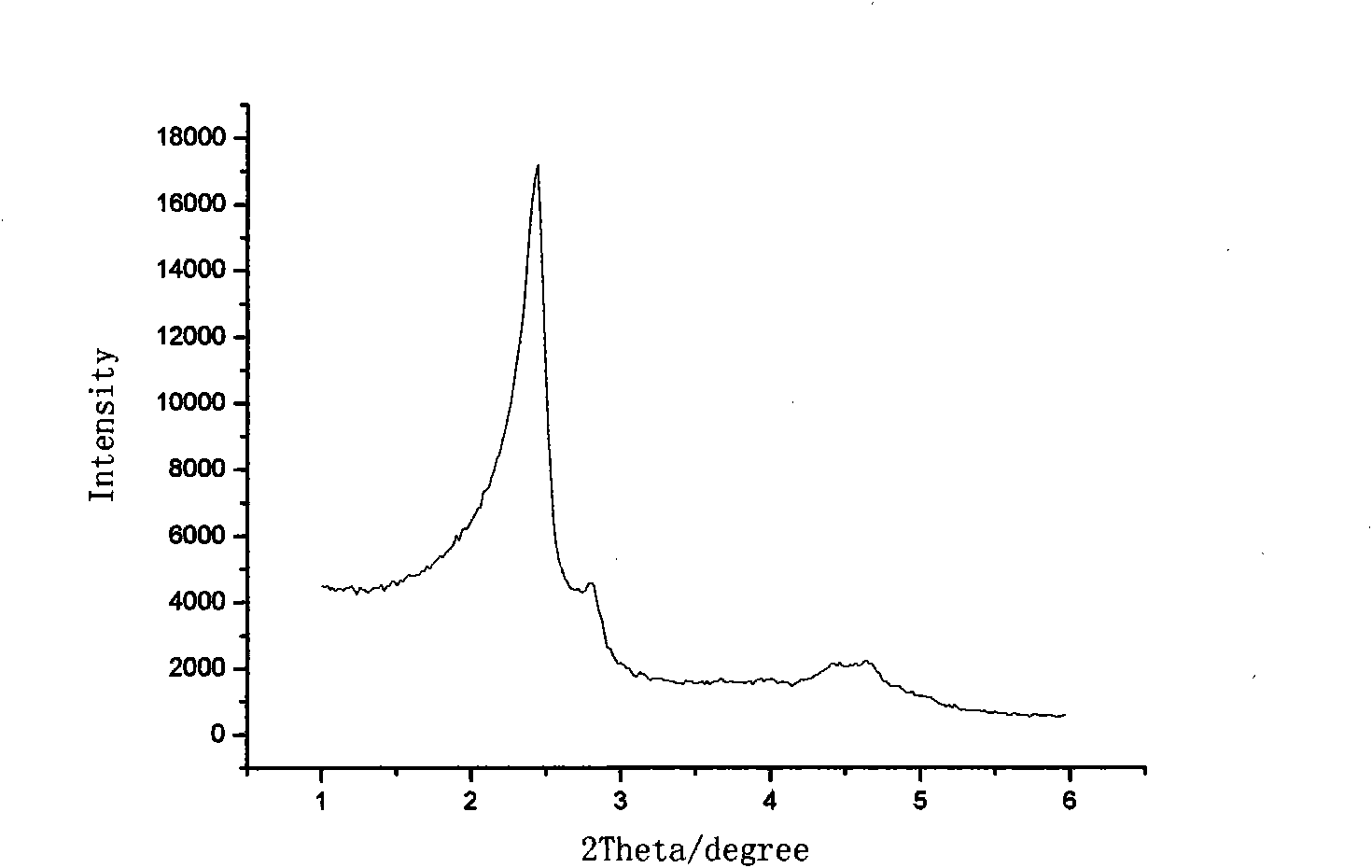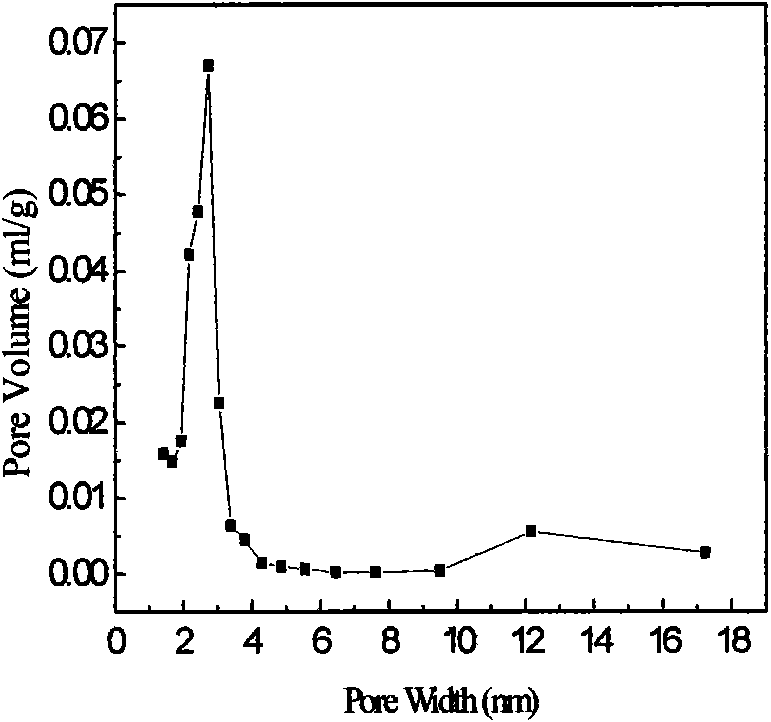Cubic mesoporous molecular sieve catalyst with micropore canals, preparation method and use thereof
A cubic mesopore and catalyst technology, applied in molecular sieve catalysts, chemical instruments and methods, physical/chemical process catalysts, etc., can solve the problems of materials that are rarely reported in literature, poor hydrothermal stability, weak acidity, etc.
- Summary
- Abstract
- Description
- Claims
- Application Information
AI Technical Summary
Problems solved by technology
Method used
Image
Examples
Embodiment 1
[0042] Mix 163.94g of sodium metaaluminate, 140g of sodium hydroxide and 14726g of a 10% aqueous solution of tetraethylammonium hydroxide by mass, then add 1201.68g of white carbon black and stir for 2 hours, then add the reactant to polytetrafluoroethylene to react In the kettle, the reaction kettle was placed in an oven for primary crystallization at 80°C for 8 hours to produce a silicon-aluminum precursor, and 2915.68g of hexadecyltrimethylammonium bromide and four The water of ethyl ammonium hydroxide aqueous solution and the remaining amount of 4746.6g deionized water are mixed evenly, and then added to the silicon aluminum precursor, and the evenly stirred reactants are transferred into a polytetrafluoroethylene reactor, and the reactor is placed in an oven Secondary crystallization at 80°C for 108 hours, self-assembled to form a mesoporous molecular sieve material, filtered, washed, dried at room temperature, and calcined at 400°C for 8 hours to remove the template and o...
Embodiment 2
[0044] Mix 163.94g of sodium metaaluminate, 160g of sodium hydroxide and 58904g of a 10% aqueous solution of tetraethylammonium hydroxide by mass, then add 12016.8g of white carbon black and stir for 2 hours, then add the reactant to polytetrafluoroethylene to react In the kettle, the reaction kettle was placed in an oven for primary crystallization at 100°C for 6 hours to produce a silicon-aluminum precursor, and 14578.4g of hexadecyltrimethylammonium bromide and four The water of ethyl ammonium hydroxide aqueous solution and the remaining amount of 986.4g deionized water are mixed evenly, and then added to the silicon aluminum precursor, and the evenly stirred reactants are transferred into a polytetrafluoroethylene reactor, and the reactor is placed in an oven Secondary crystallization at 100°C for 60 hours, self-assembled to form a mesoporous molecular sieve material, filtered, washed, dried at room temperature, and calcined at 500°C for 5 hours to remove the template to ob...
Embodiment 3
[0046] Mix 666.41g of aluminum sulfate, 180g of sodium hydroxide and 63048g of 10% tetraethylammonium bromide aqueous solution, then add 124998g of tetraethylorthosilicate and stir for 2 hours, then add the reactant to the polytetrafluoroethylene reactor In the process, put the reactor into an oven and carry out primary crystallization at 140°C for 3 hours to produce a silicon-aluminum precursor. Add 26880g of tetradecyltrimethylammonium bromide and minus 10% of tetraethyl ammonium bromide After mixing the water of ammonium bromide aqueous solution and 15256.8g deionized water of the remaining amount evenly, they were added to the silicon-aluminum precursor, and the uniformly stirred reactant was transferred to a polytetrafluoroethylene reactor, and the reactor was placed in an oven. Perform secondary crystallization at 140°C for 24 hours, self-assemble to form a mesoporous molecular sieve material, filter, wash, dry at room temperature, and bake at 700°C for 4 hours to remove ...
PUM
| Property | Measurement | Unit |
|---|---|---|
| pore size | aaaaa | aaaaa |
Abstract
Description
Claims
Application Information
 Login to View More
Login to View More - R&D
- Intellectual Property
- Life Sciences
- Materials
- Tech Scout
- Unparalleled Data Quality
- Higher Quality Content
- 60% Fewer Hallucinations
Browse by: Latest US Patents, China's latest patents, Technical Efficacy Thesaurus, Application Domain, Technology Topic, Popular Technical Reports.
© 2025 PatSnap. All rights reserved.Legal|Privacy policy|Modern Slavery Act Transparency Statement|Sitemap|About US| Contact US: help@patsnap.com



